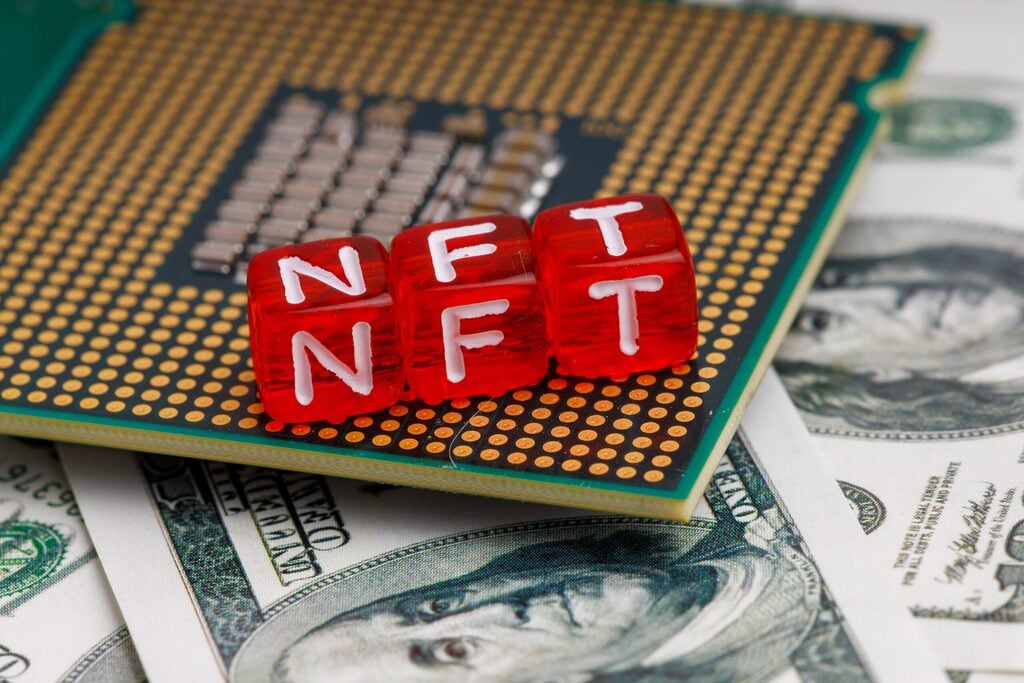NFTs started as cute JPEGs that had sentimental value, but these days they are now a full-blown business. NFT lending is a new part of that business that allows NFT owners to use their NFT collections as collateral for loans. This makes NFTs a viable financial tool for investors who want to interact with DeFi.
However, NFT lending isn’t only about using digital assets as collateral. It’s a subsystem of DeFi that has grown in complexity in recent years. This complexity notwithstanding, NFT peer-to-peer lending can be understood, and this article is an attempt at explaining it.
First, we start with the most basic question. What is NFT peer-to-peer lending?
What Is NFT Peer-to-Peer Lending?
NFT lending is simply a process where NFT owners pledge their NFTs as collateral for loans. In some ways, NFT lending is a misnomer because it gives the impression that the NFT is what is being lent. That’s not the case, as the NFT itself only acts as collateral.
NFT lending is almost exclusively peer-to-peer because market makers or centralized applications usually don’t offer it as a service.
This is probably because NFT lending is still a budding business, even within crypto. It could also be because of the illiquid nature of NFTs.
For example, one doesn’t need to find a buyer for their cryptocurrencies — they can simply sell it to market makers or on centralized exchanges. This isn’t true for NFTs, as they have to be listed on an exchange before they can be bought. That’s probably why centralized exchanges don’t offer NFT lending as a service.
In recent years, NFT lending has risen in popularity. The primary reason behind this rise is that NFTs are essentially idle assets. One cannot stake them or farm yield with them. The only thing one can do is wait for their value to grow and then sell them. That’s one advantage that regular cryptocurrencies have over NFTs, as these cryptocurrencies can earn money while in your wallet.
However, NFT lending solves this idle problem, as it allows users to pledge their NFT collections as collateral for loans. The crypto from these loans can then be used to buy tokens that can be used for yield farming or engage in other crypto ventures that may result in high returns.
Right now, most NFT lending is supported by DeFi infrastructure. This means that the business is usually concluded in peer-to-peer transactions governed by smart contracts. When the loan matures, the owner of the NFT is required to pay back the loaned crypto plus interest. When that is done, the smart contract automatically returns the NFT to the owner. If the loan isn’t paid and terms aren’t met, the owner forfeits the NFT.
How Lenders Deal with NFT Volatility
NFTs are just as volatile as cryptocurrencies, and this means it can be difficult to appraise them. An appraisal is an important part of the lending process, as people won’t lend if they aren’t certain the collateral involved is worth it.
This solution is a simple self-appraisal system. The person in search of a loan posts the NFTs they are willing to stake as collateral, and potential lenders self-appraise their worth. If the NFT value isn’t worth it, the lender won’t take the offer. Therefore, it’s up to the borrower to overcollateralize and offer NFTs that will be worth the risk for the lender.
The fact that smart contracts govern this exchange means that it’s permissionless and decentralized. Hence, there is no risk of default, and both parties will be held to their obligations no matter what.
Other Types of NFT Lending

NFT peer-to-peer lending isn’t the only type of lending borrowers can use to put their NFTs to work. They can also use peer-to-protocol, NFT rentals, and non-fungible debt positions.
NFT Peer-to-Protocol Lending
NFT peer-to-protocol lending is quite similar to peer-to-peer lending. The only real difference is that with peer-to-protocol lending, users are borrowing money from a liquidity pool instead of one borrower. In a way, the pool acts like a centralized market maker that conducts the business of lending on behalf of others.
When borrowers want to borrow from this liquidity pool, they enter into a smart contract with the pool. If the borrower defaults on the loan, the NFT is listed by the pool. In cases where the collateral is lower than the funds borrowed, the pool may transfer the NFT’s ownership to the liquidity provider.
NFT Rentals
NFT rentals are a peer-to-peer service. These services are usually for owners who want to rent out their NFTs to others. Their reasons for lending their NFTs may be because of special utilities that the NFT might have.
For example, if an NFT provides access to a concert, and the owner of the NFT is unavailable for the concert, they may rent it out to others.
In this case, the lender of the NFT sets the rental price and the rental duration. The borrower of the NFT applies for it, pays the price, and gets the NFT for a stipulated time. When that time elapses, the smart contracts return the NFT to its rightful owner.
Non-fungible Debt Positions
This sort of lending is specific to MarkerDAO, as the protocol offers stablecoins in return for collateralized NFTs. This means that NFT owners lock their NFTs with MarkerDAO to receive loans in DAI, a stablecoin.
The terms of issuing the DAI token are written into the smart contract, and the contract is executed seamlessly when certain conditions are met. For one, the NFT asset must be worth 150% of the loan. If the NFT’s value falls below 150%, it immediately becomes uncollateralized, and it incurs a 13% liquidation penalty and a stability fee.
NFT Lending Platforms
Despite being a budding industry, NFT lending has a few reputable lending service providers. This is not an exhaustive list of these lenders, and borrowers should do additional research before choosing any of them.
NFTfi
NFTfi allows users to utilize both peer-to-peer and peer-to-protocol models when collateralizing their loans. Borrowers who use NFTfi can both match with people who would like to provide loans or match with liquidity pools instead.
Arcade
Arcade is a leading NFT peer-to-peer lending platform in the crypto ecosystem. Arcade works like a lending marketplace that matches lenders to borrowers. Loans through Arcade are processed on-chain, and the collateralized assets are kept in escrow until the smart contract executes its terms.
Nexo Company
Nexo is one of the biggest NFT lending protocols in DeFi. In early 2022, the company issued about $3 million in NFT-backed loans, and the loans were collateralized by two CryptoPunk Zombies.
On the Flipside
- Overcollateralization remains a huge problem with crypto lending, and it remains a big problem with NFT lending as well. In a bear market, the liquidation rate for NFT assets locked in smart contracts could soar, and lenders could lose their assets forever.
Why You Should Care
NFT lending bridges the gap between DeFi and NFTs. With NFT lending, investors have another avenue to take risks in DeFi and make money. It also injects a lot of liquidity into the NFT space, as it frees up NFTs as assets and gives them even more functionality. The growth of the NFT lending industry also means that NFT owners wouldn’t be forced to sell their assets for cheap because of immediate cash needs. They can simply use it to collateralize a loan.
- SEO Powered Content & PR Distribution. Get Amplified Today.
- PlatoAiStream. Web3 Data Intelligence. Knowledge Amplified. Access Here.
- Minting the Future w Adryenn Ashley. Access Here.
- Source: https://dailycoin.com/how-nft-peer-to-peer-lending-works/
- :has
- :is
- :not
- :where
- $3
- $UP
- 2022
- a
- About
- access
- acts
- Additional
- ADvantage
- allows
- also
- an
- and
- Another
- any
- applications
- appraisal
- Arcade
- ARE
- article
- AS
- asset
- Assets
- At
- automatically
- Avenue
- back
- basic
- BE
- Bear
- Bear Market
- because
- becomes
- before
- behind
- being
- below
- between
- Big
- Biggest
- borrow
- borrowed
- borrower
- borrowers
- Borrowing
- both
- both parties
- bought
- bridges
- budding
- business
- but
- buy
- by
- CAN
- cannot
- case
- cases
- Cash
- centralized
- Centralized Exchanges
- certain
- cheap
- choosing
- CoinGecko
- Collateral
- collateralized
- collateralizing
- collections
- complexity
- computer
- concert
- concluded
- conditions
- conducts
- contract
- contracts
- could
- crypto
- Crypto ecosystem
- Crypto Lending
- cryptocurrencies
- CryptoPunk
- DAI
- Days
- deal
- Debt
- decentralized
- Default
- defaults
- DeFi
- DeFi infrastructure
- difference
- difficult
- digital
- Digital Assets
- do
- Doesn’t
- done
- Dont
- duration
- Early
- earn
- ecosystem
- engage
- Enter
- escrow
- essentially
- Ether (ETH)
- Even
- example
- exchange
- Exchanges
- exclusively
- Executes
- explaining
- external
- Falls
- farm
- farming
- fee
- few
- financial
- Find
- follow
- For
- For Investors
- for yield
- forever
- from
- functionality
- funds
- gap
- gives
- Grow
- grown
- Growth
- had
- Have
- Held
- hence
- High
- How
- How To
- HTTPS
- huge
- Idle
- if
- immediate
- immediately
- important
- in
- In other
- industry
- Infrastructure
- instead
- interact
- interest
- internal
- into
- Investors
- involved
- issuing
- IT
- ITS
- itself
- JPEGs
- jpg
- just
- leading
- LEND
- lender
- lenders
- lending
- lending platform
- like
- linked
- Liquidation
- Liquidity
- liquidity pool
- liquidity pools
- liquidity provider
- List
- Listed
- loan
- Loans
- locked
- lose
- Lot
- make
- make money
- maker
- Makers
- MAKES
- Market
- market maker
- market makers
- marketplace
- Match
- Matter
- matures
- max-width
- May..
- means
- might
- models
- money
- more
- most
- Nature
- Need
- needs
- New
- NFT
- NFT Assets
- NFT collections
- NFT lending
- NFT space
- NFTfi
- NFTs
- no
- non-fungible
- now
- obligations
- of
- offer
- Offers
- on
- On-Chain
- ONE
- only
- or
- Other
- Others
- out
- over
- owner
- owners
- ownership
- paid
- part
- parties
- Pay
- pays
- peer to peer
- peer-to-peer lending
- Peer-to-Peer Transactions
- People
- permissionless
- person
- platform
- plato
- Plato Data Intelligence
- PlatoData
- plus
- pool
- Pools
- popularity
- positions
- Posts
- potential
- price
- primary
- probably
- Problem
- process
- protocols
- provide
- provider
- providers
- provides
- put
- question
- Rate
- real
- reason
- reasons
- receive
- recent
- Red
- regular
- remains
- Rent
- rentals
- reputable
- required
- research
- result
- return
- returns
- Rise
- Risen
- Risk
- risks
- seamlessly
- Search
- sell
- service
- service providers
- Services
- Sets
- should
- similar
- Simple
- simply
- smart
- smart contract
- Smart Contracts
- solution
- Solves
- some
- Space
- special
- specific
- Stability
- stablecoin
- stake
- start
- started
- Still
- Supported
- system
- Take
- terms
- than
- that
- The
- their
- Them
- then
- There.
- therefore
- These
- they
- thing
- this
- three
- Through
- time
- to
- together
- token
- Tokens
- tool
- Transactions
- true
- two
- type
- types
- uncollateralized
- understood
- use
- used
- users
- using
- usually
- utilities
- utilize
- value
- Ventures
- viable
- volatile
- wait
- Wallet
- want
- Way..
- ways
- we
- WELL
- were
- What
- What is
- when
- while
- WHO
- why
- will
- willing
- with
- within
- Work
- works
- worth
- would
- written
- years
- Yield
- yield farming
- you
- Your
- zephyrnet












